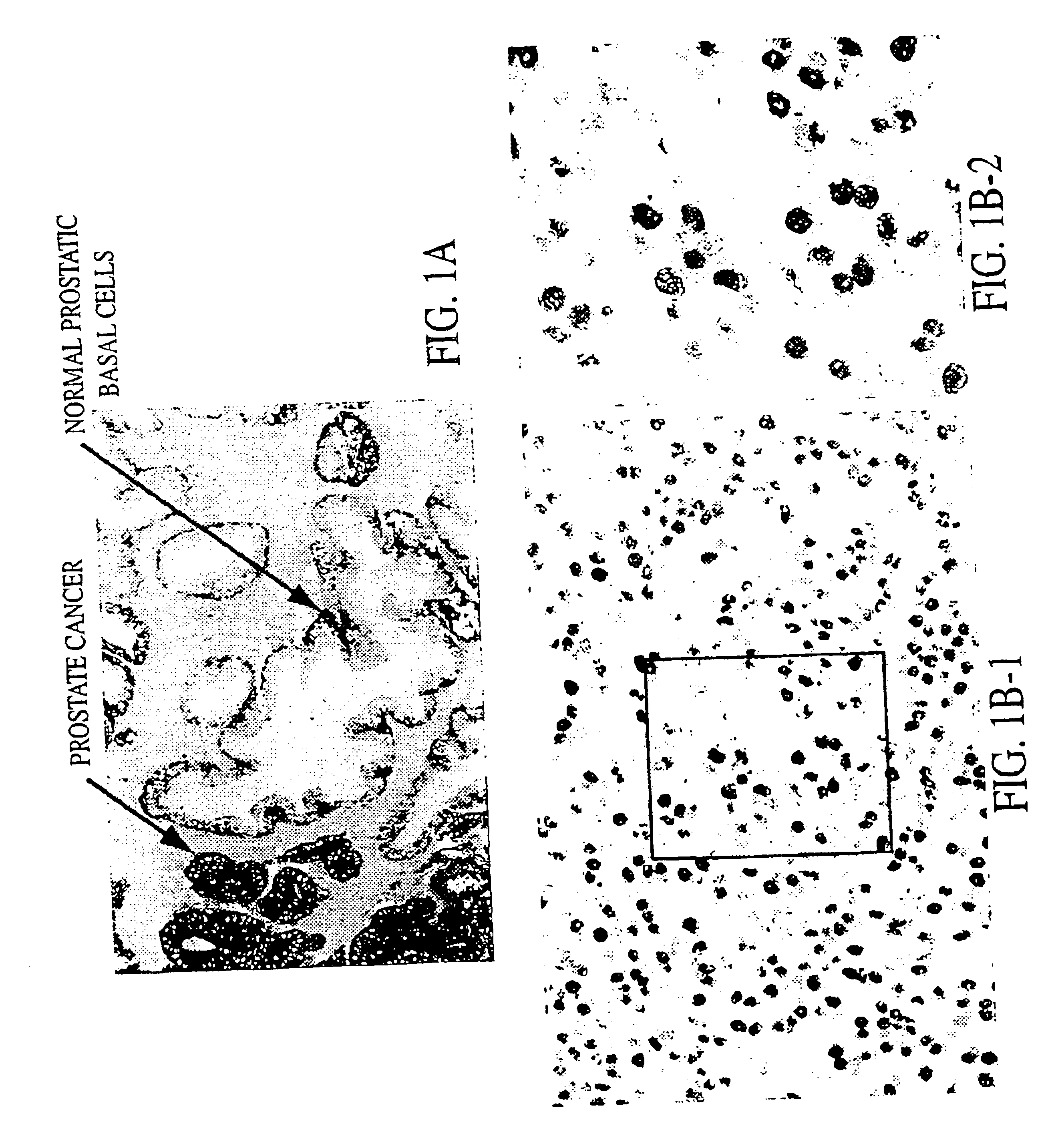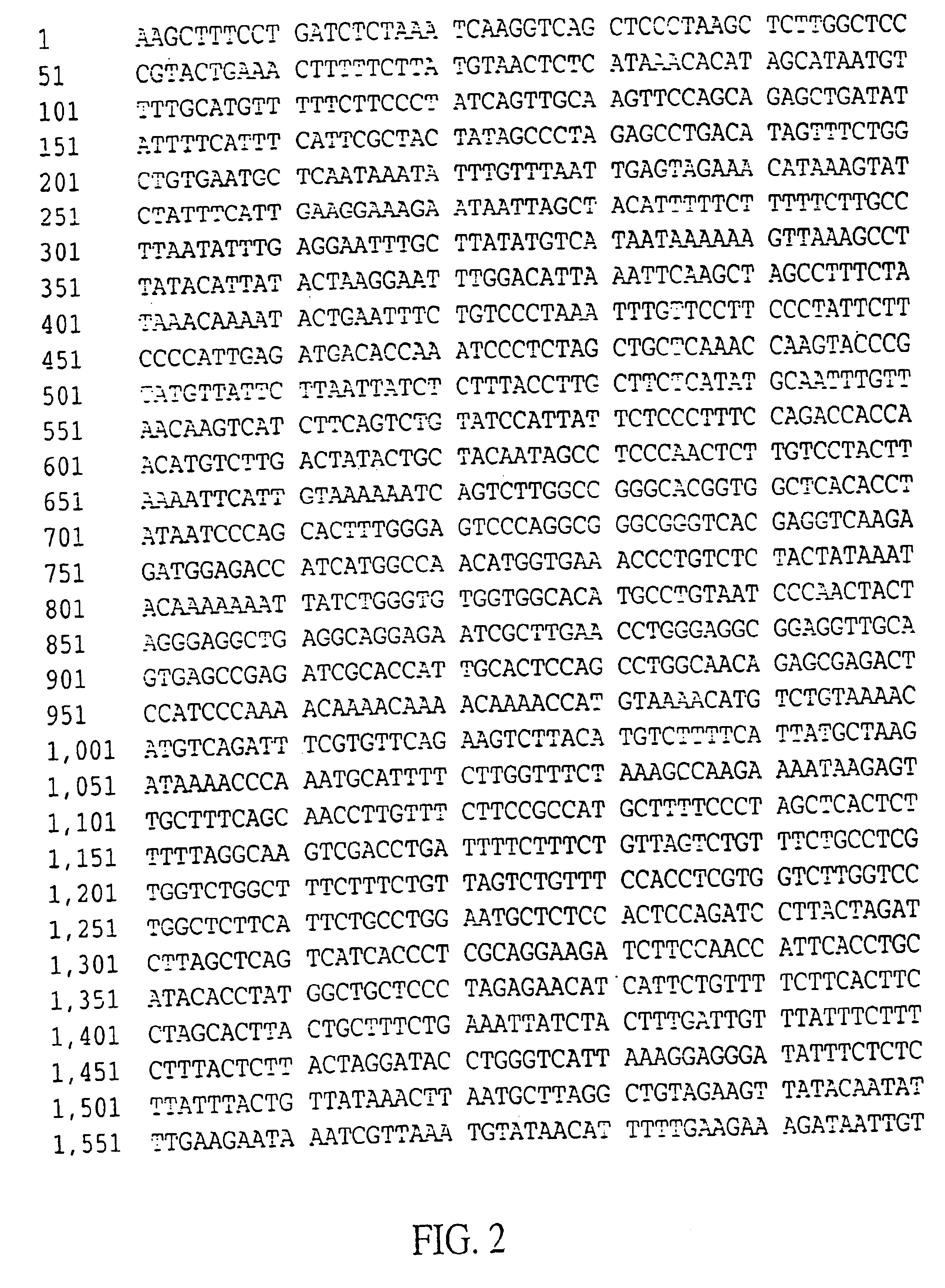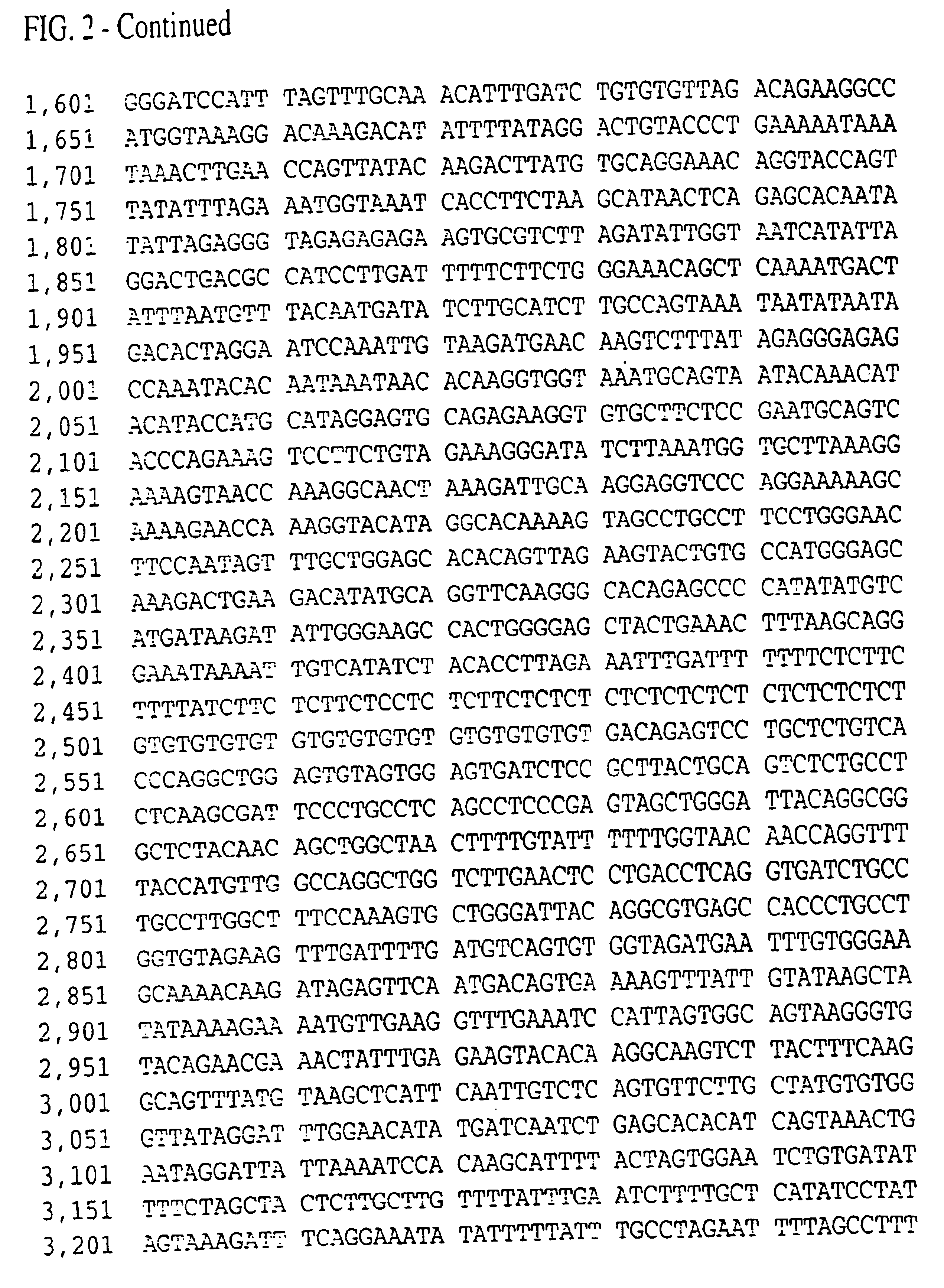Gene family with transformation modulating activity
a gene family and gene technology, applied in the field of gene family with transformation modulating activity, can solve the problem that the study of alterations in specific genes has not been particularly rewarding
- Summary
- Abstract
- Description
- Claims
- Application Information
AI Technical Summary
Benefits of technology
Problems solved by technology
Method used
Image
Examples
example 1
Cellular Location of pp32 Expression
[0078]pp32 mRNA can be detected by in situ hybridization with a pp32 probe under stringent conditions.
[0079]In situ hybridization. Bases 1-298 of the pp32 cDNA sequence (GenBank IISU73477) were subcloned into the Bluescript vector by standard techniques. Digoxigenin labeled anti-sense and sense RNA probes were generated using a commercially available kit (Bochringer Mannheim). Vector DNA linearized with BamHI and XhoI served as template for antisense and sense probe generation respectively. In vitro transcription was performed for 2 hours at 37° in a final volume of 20 μl which contained 1 μg of template DNA, 2 U / μl of either T3 or T7 RNA polymerase. 1 U / μl ribonuclease inhibitor, 1 mM each of ATP, CTP, GTP, 0.65 mM UTP, 0.35 mM digoxigenin-II-UTP, 40 mM Tris-HCl pH 8.0, 10 mM NaCl, 10 mM DTT, 6 mM MgCl2 and 2 mM spermidine. The reaction was stopped by adding 2 μl of 0.2M EDTA, pH 8. 0 and the synthesized transcripts were precipitated for 30 min a...
example 2
ESTs corresponding to pp32
[0082]Several potential variant pp32 species have been identified in the prostate cancer expressed sequence tag libraries of the NCl's Cancer Genome Anatomy Project. Clone 588488 encodes a protein that is 96% identical to APRIL, although absent retrieval and sequencing of the full clone, it is impossible to tell whether the entire EST clone encodes a pp32 related sequence; neither is it possible to assess the biologic function of this molecule at this time. Nevertheless, it is apparent that the sequenced portion encodes a protein bearing great similarity to pp32. This EST does not appear in the database for normal prostate. As with the variant pp32 species recovered from prostate cancer, generation of this molecule by mutation would require a complex mechanism.
[0083]pp32-related genes are present in other organisms. The existence of a pp32 gene family in rodent would be consistent with the existence of a comparably sized family in human. A murine pp32 (GenB...
example 3
The Structure of a Gene Encoding a Relative of the pp32 Family
[0084]Screening a human genomic library in bacteriophages with probes generated from human pp32 cDNA yielded a new sequence that contained an open reading frame encoding a protein homologous with pp32.
Screening a Human Genomic Library in Bacteriophages for pp32 cDNA:
[0085]A genomic library from human placenta in the Lambda Fix II vector was expressed in E. coli strain XL-1 Blue MRA (Stratagene #946206). Screening for bacteriophage clones containing DNA inserts homologous with pp32 cDNA followed routine procedures (Sambrook, et at.). Briefly, nitrocellulose filters that had overlain bacteriophage plaques were hybridized with P-32 labeled probes for pp32 cDNA. The probes were prepared by the random primer method (Stratagene #300385) using pp32 cDNA as a template (Chen, et al., Molec, Biol, Cell, 7:2045-2056,1996.). Reactive bacteriophage plaques were plugged and the bacteriophages were eluted, reexpressed, and rescreened wi...
PUM
| Property | Measurement | Unit |
|---|---|---|
| volume | aaaaa | aaaaa |
| pH | aaaaa | aaaaa |
| frequencies | aaaaa | aaaaa |
Abstract
Description
Claims
Application Information
 Login to View More
Login to View More - R&D
- Intellectual Property
- Life Sciences
- Materials
- Tech Scout
- Unparalleled Data Quality
- Higher Quality Content
- 60% Fewer Hallucinations
Browse by: Latest US Patents, China's latest patents, Technical Efficacy Thesaurus, Application Domain, Technology Topic, Popular Technical Reports.
© 2025 PatSnap. All rights reserved.Legal|Privacy policy|Modern Slavery Act Transparency Statement|Sitemap|About US| Contact US: help@patsnap.com



